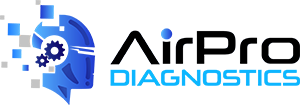Once logged in to your account and the vehicle has been entered as a repair, ORION lets you easily submit a scan request. ORION allows you to request the following scan types:
Pre Scan Requests
[one-half]
Quick Scan
This type of scan is preformed to a vehicle that does not display any warning lamps, symptoms, or an obvious airbag deployment. The purpose is to check if any codes are set in any system of a vehicle and what systems the vehicle is equipped with on its computer network. This scan remains a “Quick Scan” when the results are “no codes in any system” the scan type changes to an Inspection Scan if trouble in a system is found that requires further inspections, diagnostics, or assessments. In addition, a review of the repairs for the vehicle will include the identification of any required calibrations that will be needed as part of the repair process. (OCS, steering angle, park assist, object detection calibrations, etc.) All information is documented at this time.
[/one-half]
[one-half]
Inspection Scan
This type of scan is applied when any warning lamps or messages are seen; visible air bag deployments occurred, or codes were found during a quick scan that did not illuminate a MIL (Malfunction indicator lamp, AKA check engine light). This takes a bit longer and requires more effort and knowledge by a diagnostic technician than a quick scan because codes, data and electronic assessments are taking place. The Technician performing this and reviewing the data must have knowledge of vehicle systems and functions to make on-car inspections, testing, or part replacement recommendations. If systems are identified that require specialized vehicle set up, targeting etc., this must be identified and included in the repair plan for possible subletting to complete the task if the shop is not equipped.
If an Air Bag deployment has occurred the system is evaluated to determine if all stages of multistage air bags have deployed or if live detonators are still present in deployed devices. The air bag module is evaluated electronically to determine if replacement is needed.
[/one-half]
Post Repair Scan Requests
These scans include:
Diagnostic Scans
This type of scan is preformed during the repair process and the application is conditional.
This type of scan applies in two different situations.
A known problem that requires a scan tool to access data, troubleshoot, reset systems, program a replacement module, etc. To proceed with vehicle repairs, a completion scan will need to be preformed to clear codes, perform calibrations, and verify repairs when vehicle assembly is complete before QC (Quality Control) stage.
When additional trouble is found with the vehicle that requires on-vehicle repairs or on-vehicle pinpoint troubleshooting during a completion scan. The scan type will be changed to a diagnostic scan. If the shop is not equipped with troubleshooting tools (such as test lamps, voltmeters, etc.) and a technician with the skill set to follow guided instructions or shortcomings in diagnostic applications, recommendations will be made to sublet the repair to a skilled and equipped shop, dealership or specialized mobile technician.
Completion Scans
This type of scan is preformed when a vehicle is completely re-assembled before the final QC (Quality Control) inspection. Required calibrations and/or necessary programming procedures are done; all systems are checked and all system code clears are done. Verification of warning lamps and basic system functions are verified with all calibration procedures and scan results are documented.
If additional trouble is found, or procedures will not complete due to incomplete repairs, electrical connection issues, or defective parts, the scan changes to a Diagnostic Scan and returns to repair for additional correction or on-car troubleshooting.
Follow-Up Scans
(No Codes, all Systems Clear) (No Warning Lamps on) (No visual Air Bag Deployments)
This type of scan is preformed to a vehicle that does not display any warning lamps, symptoms, or an obvious airbag deployment. The purpose is to check if any codes are set in any system of a vehicle and what systems the vehicle is equipped with on its computer network. This scan remains a “Quick Scan” when the results are “no codes in any system” the scan type changes to an Inspection Scan if trouble in a system is found that requires further inspections, diagnostics, or assessments. In addition, a review of the repairs for the vehicle will include the identification of any required calibrations that will be needed as part of the repair process. (OCS, steering angle, park assist, object detection calibrations, etc.) All Information is documented at this time
This type of scan is conditionally based and preformed only after a completion scan, final QC and road test are complete. Conditions below indicate when a follow-up scan is needed. Completion scan results must be available for comparative purposes.
If a warning lamp illuminates during or after QC with a road test
Several fault types can be present that will not set a code with or without a warning lamp until the particular function is activated. Examples are cruise control, evaporative emissions, cooling fans, HVAC functions, park assist object detection, etc.
If symptom(s) or function(s) is/are found to be inoperative during QC procedures.
If a symptom is found such as window, or liftgate functions inoperative; lighting functions inoperative; passive entry, etc., a follow-up scan can show additional fault codes or returning fault codes that were cleared during a completion scan session.
If a particular concern is seen during a completion that warrants additional confirmation by double-checking the system with a follow-up scan for verification purposes.
During a completion scan a follow-up scan may be recommended based on the nature of the repairs or procedures performed during completion.
If a customer returns with a warning lamp or symptom: Some faults can take several drive cycles, key cycles, or specific conditions before they will set. Additionally, other faults can occur or systems can fail coincidentally after a repair.
[button link=”/orion/”]Back to Orion[/button]

